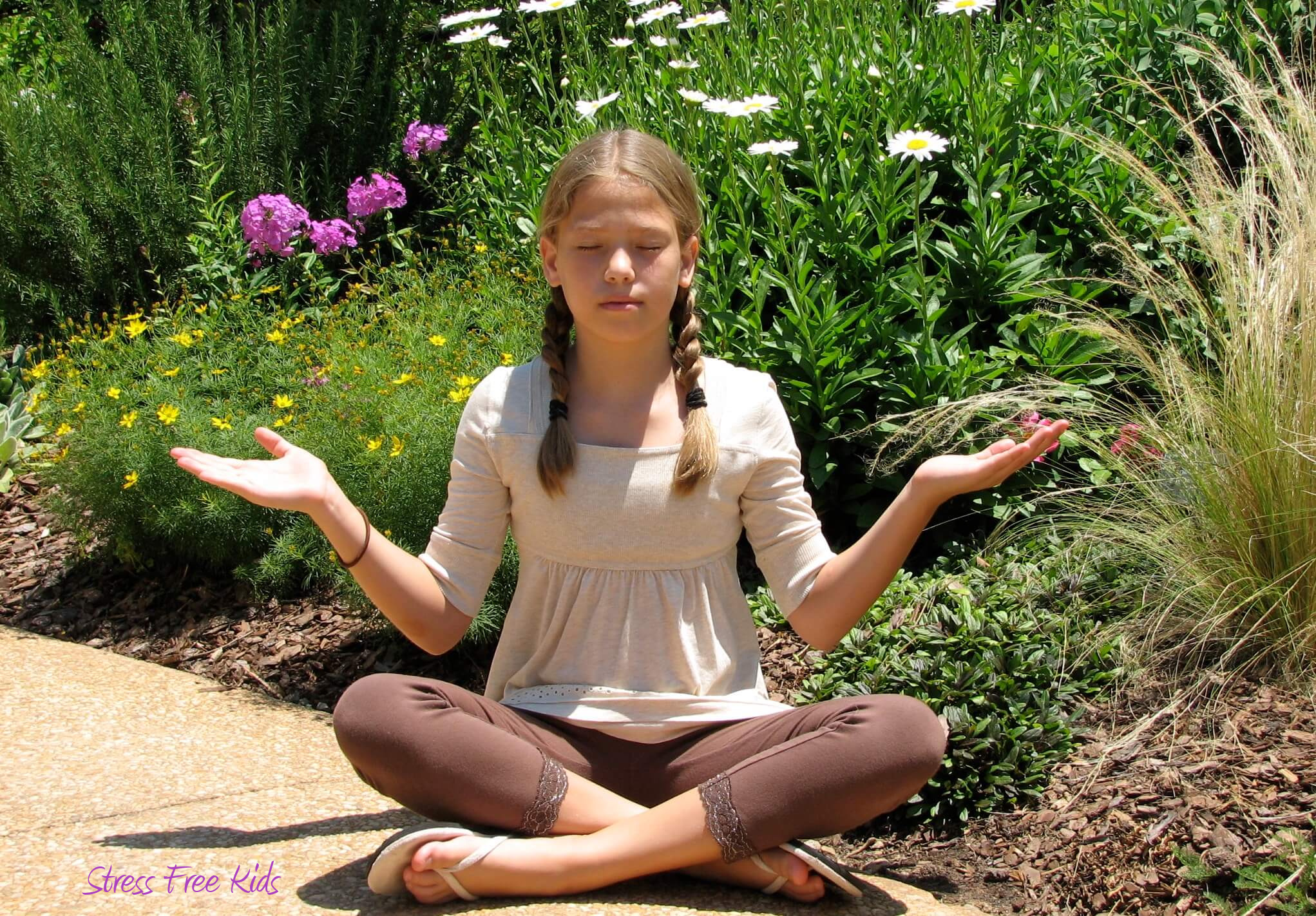
Children and the benefits of meditation is a trendy topics, especially when it comes to meditation in the classroom. But meditation is a difficult concept to teach children. A child cannot and should not be forced to learn to meditate. The pursuit of learning to meditate is a very personal decision coupled with a strong commitment and desire to do so. As a parent or educator, there are many steps and techniques that can be explored and enjoyed as a precursor to meditation. So how do children and meditation go together? Heather Barnard put forth the following questions, and it was a pleasure to answer them.
Q. At what age do you think a child truly benefits from meditation or relaxation?
A. It is never too soon for a child to reap the benefits of relaxation and meditation. There are reports that state that stress levels during pregnancy can affect an unborn child. I used deep breathing throughout my last pregnancy and I believe that my newborn was easier to soothe when I focused on my breathing because of this. In general, the age of 4 is when a child can start to participate in relaxation exercises, but I have seen children as young as 18 months copy breathing and positive statements. Little exposures can begin at any age.
Q. Does there have to be a formal setting, or can a child/family do this anywhere? When/where is the best?
A. I am an advocate of a more playful, matter-of-fact approach. Parents should use relaxation tools throughout their day. Children see children do. Each day brings numerous opportunities for parents to apply stress management and healthy solutions. Blowing bubbles is a stress reducer and fun activity enjoyed by all ages. A mom or dad who practices meditation can invite their child to sit beside them or climb onto their lap with a toy or a book. Demonstrating is always the most powerful teaching tool. If something feels good and fun to a child they are more likely to want to experience it again. Introducing children to these tools will give them an advantage if and when they want to meditate.
Q. What are the major keys to successful meditation/relaxation, and what does that look like for a young child?
A. It can take a lifetime for meditators to be able to clear their mind of all thought with the purpose of transcending the mind. It is extremely impractical to impose these expectations on a child and I believe that this type of practice should be an individual personal choice. Just being able to stop the chatter or train your mind to focus on an image or thought for more than a few seconds is an accomplishment. The focus should be on introducing tools to children so that they can integrate practical tools like visualizing, breathing, and positive statements into their lives. Storytelling is an age-old method of passing along lessons. I created stories that incorporated research-based stress management techniques for my own children to learn to self-soothe. All of my stories can be found in my Indigo Dreams Series.
Q. How do you suggest helping a family introduce it into their lives?
A. Show your children how you use relaxation throughout your day. Take deep breaths when you are driving or rushing to get out the door. Try a candlelight dinner or breakfast. See who can hold their gaze on the flame for 30 seconds. Introduce your family to relaxation music or classical music. Explain to your children that you are calming yourself down or use positive statements when you are feeling frustrated. With a little practice, relaxation techniques will become second nature to you and your children.
Stress Free Kids founder Lori Lite is a freelance blogger, social media strategist, parenting expert, and successful entrepreneur. Her line of books and CDs is designed to help children, teens, and adults decrease stress, anxiety, and anger. Ms. Lite’s books, CDs, and lesson plans are considered a resource for parents, psychologists, therapists, child life specialists, teachers, doctors, and yoga instructors. Lori’s award-winning books received national attention on Shark Tank and her sort-after accessible tips have been featured in hundreds of publications including: CNN Living, Real Simple Magazine, USA Today, Family Circle, Working Mother Magazine, and Web MD. For more information visit Stress Free Kids and for daily advice follow Lori on Twitter.
Check out the fun step-by-step techniques you can introduce to children as a parent or educator:
Visualizing
Positive Statements or Affirmations
Anger Management
Breathing
Learn more about our Stress Free Kids Curriculum (designed for easy use for parents and educators)